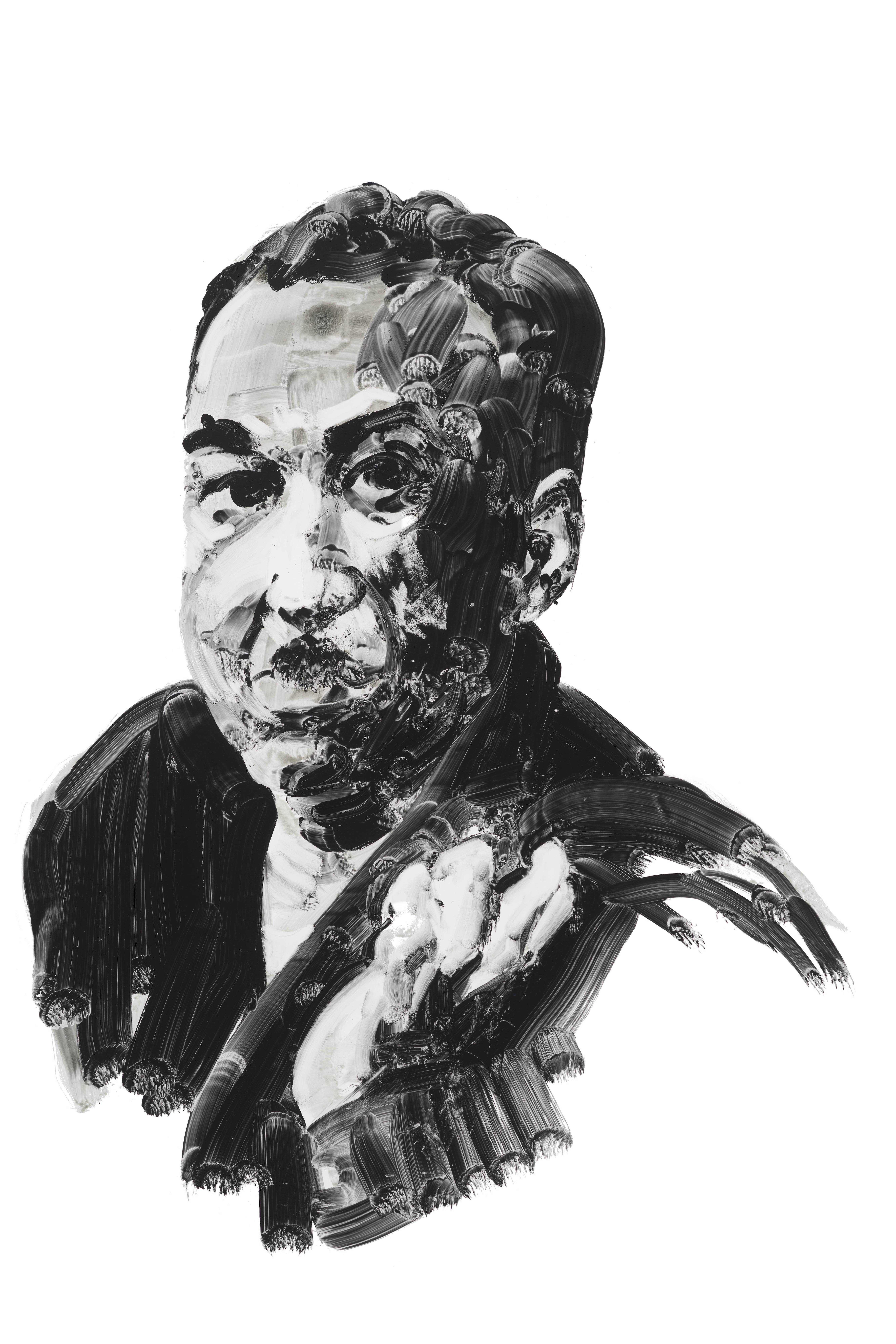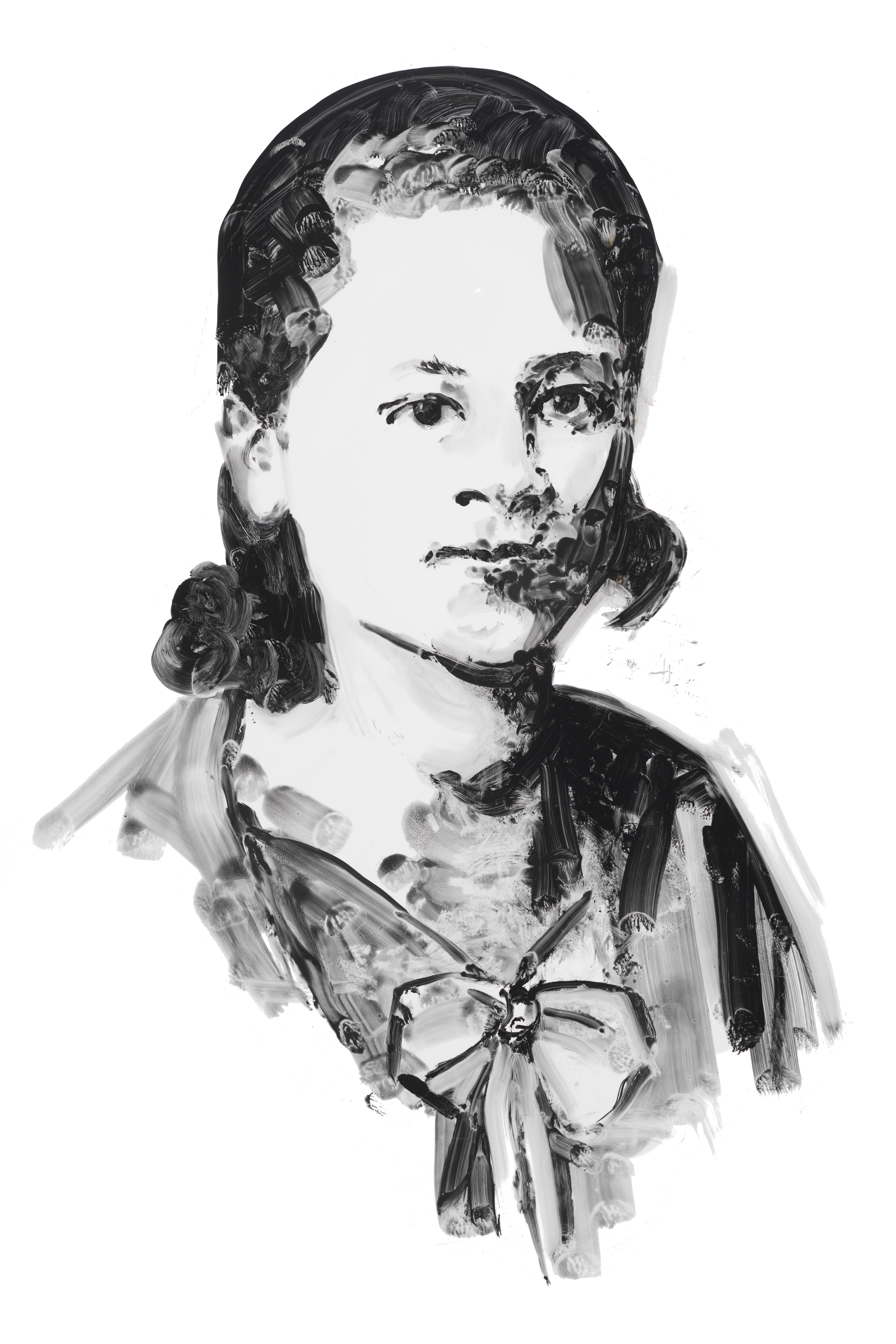Eric Fischl’s Saints of Sag Harbor: Part IV

The religious past and the art-as-religion future have intersected within the walls of the Sag Harbor Church, a cultural hub with famed artists/activists April Gornik and Eric Fischl as the founders, and Sara Cochran as executive director.
The soaring building is home to 20 windows; it is there, explained Fischl, where the “arts saints of Sag Harbor, the dead saints, will be canonized.” Fischl’s artistic contribution to the historical narrative of those of who were drawn to the East End as a vortex of creativity shine down from the portals surrounding the space.
For more information about programs, visit sagharborchurch.org
Dan’s Papers is showcasing two windows a week for 10 weeks, with Fischl’s light-hearted responses when asked the irreverent question, “What would this luminary be the patron saint of, besides Sag Harbor?”
Langston Hughes (1902-1967)
Fischl: “Langston Hughes is our renaissance saint of the Black voice and all those souls who speak to rivers.”
James Mercer Langston Hughes was a leader of the Harlem Renaissance — a poet, social activist, novelist, playwright and columnist.
After graduating high school in Cleveland, he soon began studies at Columbia University. Although he dropped out from Columbia, he gained notice from New York publishers, first in The Crisis magazine, and then from book publishers. He eventually graduated from Lincoln University. In addition to poetry, Hughes wrote plays and short stories, and also published several non-fiction works.
From 1942 to 1962, as the civil rights movement was gaining traction, he wrote an in-depth weekly column in a leading black newspaper, The Chicago Defender. Hughes was a frequent guest in William Pickens’ Sag Harbor house in the early 1950s.
One of the innovators of jazz poetry, his well-known poems include “The Negro Speaks of Rivers,” “Mother to Son,” and “Harlem:”
What happens to a dream deferred?
Does it dry up
like a raisin in the sun?
Or fester like a sore—
And then run?
Does it stink like rotten meat?
Or crust and sugar over—
like a syrupy sweet?
Maybe it just sags
like a heavy load.
Or does it explode?
Amaza Lee Meredith (1895–1984)

“Amaza Lee Meredith is our patron saint of architecture and education in the arts; a designer of buildings that become homes that build communities,” says Fischl.
Amaza Lee Meredith was an American architect, educator and artist, best known locally for creating the Azurest community.
Meredith was unable to formalize her profession as an architect because of “both her race and her sex,” and instead founded the art department at Virginia State University, where she also worked as a teacher. She is best known for her residence, Azurest South, built in 1939, where she and her partner Edna Meade Colson resided together.
Despite having no formal training in architecture, Meredith designed many homes for family and friends in Virginia, New York and Texas. Azurest South is considered a rare example of Virginia’s International Style and displays her interest in avant-garde design. Meredith actively documented her lifestyle and accomplishments at Azurest though photographs.
In 1947, Meredith began developing a 120-lot subdivision in Sag Harbor called Azurest North for her family and friends. She and her friends created the Azurest Syndicate, which enabled the creation of an African American leisure community. Terry Cottage and Edendot were both designed by Meredith. In 1958, she retired from teaching but continued to design buildings and paint throughout the ‘60s. In the ‘70s, Meredith designed logos to be used for a proposed name change for the National Association for the Advancement of Colored People (NAACP).



